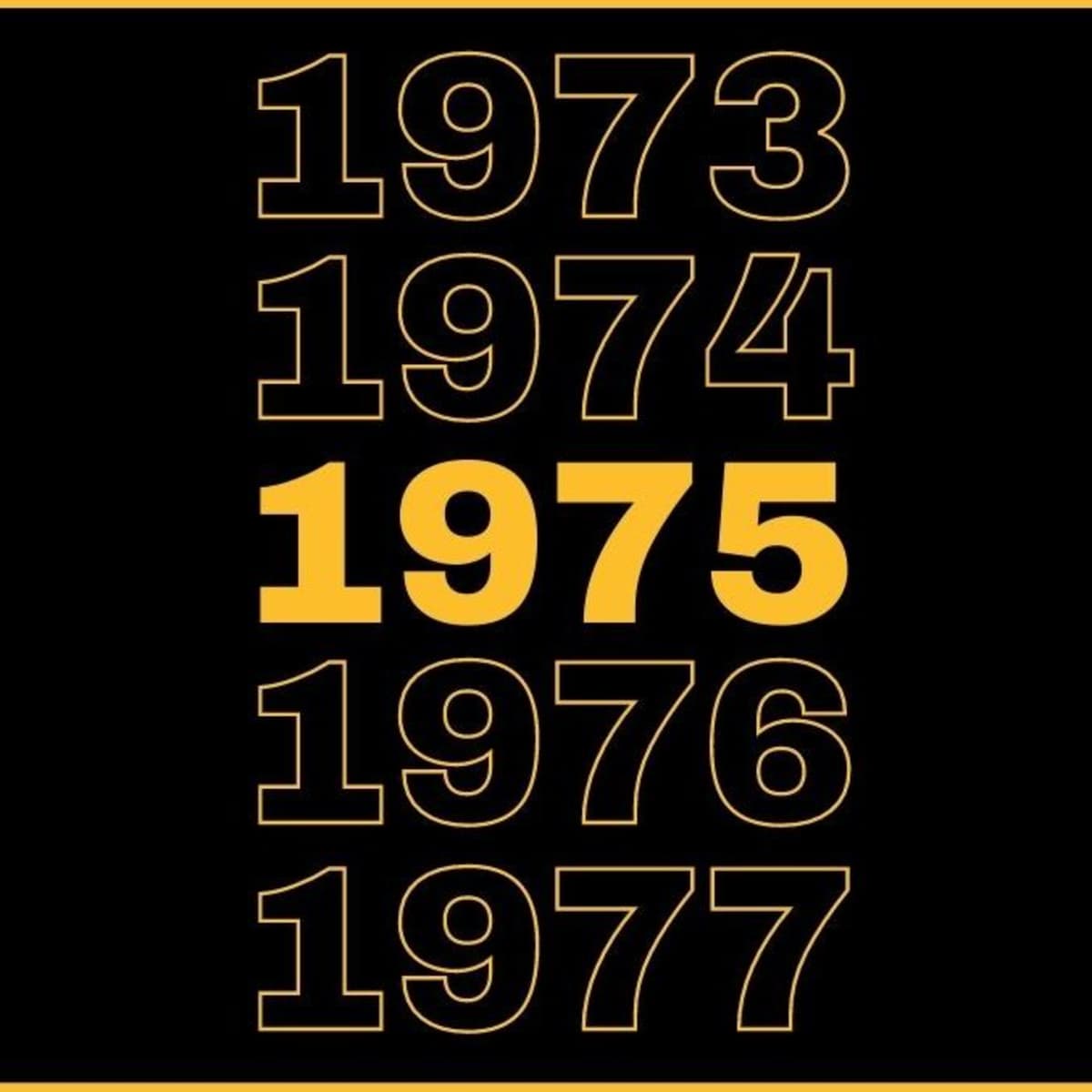1975 Ford Trucks For Sale: A Timeless Workhorse and Coveted Classic pickup.truckstrend.com
In the vast landscape of classic American vehicles, the 1975 Ford truck holds a special, almost legendary, status. Part of the iconic "Dentside" generation (1973-1979) of the F-Series, these trucks represent a pinnacle of Ford’s design philosophy: rugged durability, no-nonsense utility, and a distinctive aesthetic that has only grown more appealing with age. For enthusiasts, collectors, and those simply seeking a dependable, character-filled vehicle, a 1975 Ford truck isn’t just a purchase; it’s an investment in a piece of automotive history that continues to offer immense practical and nostalgic value.
This comprehensive guide will delve into everything you need to know about 1975 Ford trucks for sale, from their enduring appeal and diverse models to crucial buying tips, ownership considerations, and what you can expect to pay for these magnificent machines.
1975 Ford Trucks For Sale: A Timeless Workhorse and Coveted Classic
The Enduring Appeal: Why a 1975 Ford Truck?
The allure of the 1975 Ford F-Series is multifaceted, drawing in a wide range of buyers:
- Rugged Reliability: These trucks were built to last. With robust frames, simple mechanical systems, and powerful engine options, they were designed for hard work and proved incredibly resilient. Many examples still running today are a testament to their inherent toughness.
- Classic "Dentside" Styling: The 1973-1979 F-Series earned the "Dentside" nickname from the distinctive body line running along the side of the truck. This design, characterized by its strong lines, prominent grille, and balanced proportions, exudes a quintessential 1970s American truck aesthetic that is both functional and aesthetically pleasing.
- Versatility and Customization: Whether you’re looking for a dependable farm truck, a stylish daily driver, a show-stopping restomod, or a capable off-road machine, the 1975 F-Series serves as an excellent foundation. Its relatively straightforward design makes it a favorite for customization projects.
- Nostalgia and Heritage: For many, owning a 1975 Ford truck is about connecting with a simpler time, evoking memories of family road trips, working on the farm, or simply a deep appreciation for classic American manufacturing.
- Strong Community and Parts Availability: Thanks to their popularity, there’s a thriving community of "Dentside" enthusiasts and a surprisingly good availability of both OEM and aftermarket parts, making maintenance and restoration projects more manageable.

Understanding the 1975 Ford F-Series Lineup
The 1975 model year was significant for Ford trucks, most notably with the introduction of the F-150, which bridged the gap between the F-100 and F-250 due to new emissions regulations. Here’s a breakdown of what you might encounter:
- Models:

- F-100: The traditional half-ton pickup, still popular but gradually being superseded by the F-150.
- F-150: The new "heavy half-ton," designed to bypass some catalytic converter requirements that applied to lighter trucks, quickly became a best-seller.
- F-250: The three-quarter-ton workhorse, known for its increased payload and towing capacity. Often found with a "Camper Special" package.
- F-350: The one-ton heavy-duty truck, available in various configurations, including chassis-cab for custom bodies.
:max_bytes(150000):strip_icc():focal(999x0:1001x2)/the-1975-121722-02-2000-dec1a434fe3645baa1732663cf205ba1.jpg)
- Body Styles:
- Regular Cab: The standard two-door cab.
- SuperCab: Introduced in 1974, this extended cab offered extra space behind the front seats, accessible by a smaller rear door (or no door, depending on the year/configuration), making it ideal for families or those needing secure interior storage.
- Drive Types:
- 2WD (Rear-Wheel Drive): Common for most applications, offering simpler mechanics and often better fuel economy.
- 4×4 (Four-Wheel Drive): Highly sought after for off-road capability, utility, and commanding presence. These typically command a premium.
- Engine Options: Ford offered a range of robust engines in 1975:
- Inline-6: The reliable 300 cubic inch (4.9L) straight-six, known for its torque and longevity. A 240 cu in (3.9L) was also available in some F-100s.
- V8s:
- 302 cu in (5.0L): A smaller V8, often found in F-100/F-150s.
- 360 cu in (5.9L) FE: A popular medium-block V8, common in F-100/F-250s.
- 390 cu in (6.4L) FE: A larger, more powerful FE series V8, often found in F-250s and F-350s.
- 460 cu in (7.5L) 385-Series: The largest and most powerful V8 available, typically found in F-250s, F-350s, and SuperCabs, especially those with towing packages.
- Transmission Options:
- Manual: 3-speed column shift, 4-speed floor shift (including the New Process NP435, a very robust truck transmission).
- Automatic: Ford C6 (heavy-duty) and C4 (lighter duty).
- Trim Levels: From basic utility to comfortable cruising, 1975 Ford trucks came in various trims:
- Custom: The base model, no-frills work truck.
- Ranger: Added some exterior brightwork and improved interior amenities.
- Ranger XLT: More chrome, better interior upholstery, and additional features.
- Lariat: The top-tier luxury trim, featuring plush interiors, extensive trim, and often power options.
What to Look For: Key Inspection Points When Buying
Buying a classic truck requires a keen eye. Here’s what to prioritize during your inspection:
- Rust, Rust, Rust: This is the primary enemy of "Dentsides." Pay close attention to:
- Cab Corners and Rocker Panels: These are notorious rust traps.
- Floor Pans: Check under the carpet/mat.
- Fenders and Wheel Arches: Especially where dirt and moisture collect.
- Bed Floors and Sides: Common in trucks used for hauling.
- Frame: Inspect for severe pitting, cracks, or previous repairs.
- Engine and Drivetrain:
- Leaks: Look for oil, coolant, or transmission fluid leaks.
- Smoke: Blue (oil), white (coolant), or black (rich fuel mix) smoke from the exhaust indicates issues.
- Noises: Listen for knocking, ticking, or grinding sounds.
- Transmission: Check fluid levels (on automatics), and test all gears for smooth engagement and shifting.
- 4×4 Systems: Engage 4WD (high and low) to ensure it works, and listen for clunks or binding.
- Suspension and Steering:
- Worn Components: Look for cracked bushings, leaky shocks, or saggy leaf springs.
- Steering Play: Excessive play in the steering wheel could indicate worn steering box, tie rods, or ball joints.
- Brakes: Check for spongy pedal, pulling to one side, or grinding noises. Ensure the emergency brake works.
- Electrical System: Test all lights (headlights, tail lights, turn signals, brake lights), gauges, wipers, heater/AC (if equipped), and radio.
- Interior Condition: Assess the seats, dashboard (prone to cracking), headliner, and door panels. Restoration costs for interiors can add up.
- Documentation: A clear title is essential. Any service records or history are a huge bonus.
- Originality vs. Modifications: Decide what you want. A highly original truck may be more valuable to collectors, while a modified one might offer modern conveniences or performance.
The Buying Process: Tips for a Successful Purchase
- Set a Realistic Budget: Beyond the purchase price, factor in potential repairs, registration, insurance, and any desired upgrades.
- Do Your Research: Understand market values for different models, conditions, and configurations. Websites like Hagerty, classic truck forums, and recent auction results can be valuable.
- Where to Look:
- Online Marketplaces: eBay Motors, Craigslist, Facebook Marketplace (look for local groups).
- Classic Car Dealers: Often higher prices but potentially better-vetted vehicles.
- Auctions: Can be risky if you can’t inspect beforehand.
- Word of Mouth: Sometimes the best deals are found through local networks.
- Always Inspect in Person: Pictures rarely tell the whole story. If you can’t go, hire a reputable pre-purchase inspector specializing in classic vehicles.
- Test Drive Thoroughly: Drive the truck at various speeds, on different road surfaces, and try all functions. Listen, feel, and pay attention to any unusual behaviors.
- Negotiate: Most prices on classic vehicles are negotiable. Be polite but firm, and be prepared to walk away if the deal isn’t right.
- Clear Ensure the seller has a clear title in their name and that the VIN matches the vehicle.
Owning a 1975 Ford Truck: Maintenance & Customization
Owning a 1975 Ford truck is a rewarding experience, but it does come with responsibilities:
- Routine Maintenance: These trucks are relatively simple to maintain. Regular oil changes, lubrication, tune-ups (spark plugs, points/electronic ignition, carburetor adjustments), and fluid checks are crucial for longevity.
- Common Issues & Solutions:
- Carburetor Woes: Old carburetors can be finicky. Rebuilding or upgrading to a modern aftermarket carburetor (or even fuel injection) can vastly improve reliability.
- Vacuum Leaks: Age-hardened vacuum lines can cause performance issues. Inspect and replace as needed.
- Rust Repair: This is an ongoing battle. Address small spots before they become large problems. Body panels are reproduced, but proper rust repair can be costly.
- Steering & Suspension Wear: Worn components are common. Upgrading to modern steering boxes, power steering conversions, or disc brake conversions can greatly enhance drivability and safety.
- Restoration vs. Preservation: Decide if you want a fully restored, concourse-quality truck, a reliable driver, or a well-preserved original. Each path has different costs and time commitments.
- Customization Potential: The "Dentside" F-Series is a blank canvas. Popular modifications include:
- Engine Swaps: Modern V8s (Coyote, LS) or diesel engines for more power and efficiency.
- Suspension Upgrades: Lift kits for off-road, lowering kits for street performance, or modern independent front suspension (IFS) conversions.
- Modern Comforts: Adding air conditioning, power windows, better audio systems, or upgrading seats can make daily driving more enjoyable.
- Brake Upgrades: Converting to power disc brakes significantly improves stopping power.
1975 Ford Truck Price Guide
The price of a 1975 Ford truck varies significantly based on model, condition, engine, drive type (2WD/4×4), and originality. The table below provides a general range:
| Model/Configuration | Condition: Project/Rough | Condition: Driver Quality | Condition: Good/Solid | Condition: Excellent/Restored |
|---|---|---|---|---|
| F-100 2WD | $2,000 – $5,000 | $6,000 – $12,000 | $13,000 – $25,000 | $25,000 – $45,000+ |
| F-150 2WD | $2,500 – $6,000 | $7,000 – $14,000 | $15,000 – $28,000 | $28,000 – $50,000+ |
| F-100/F-150 4×4 | $4,000 – $8,000 | $9,000 – $18,000 | $19,000 – $35,000 | $35,000 – $60,000+ |
| F-250 2WD | $2,500 – $6,000 | $6,500 – $13,000 | $14,000 – $26,000 | $26,000 – $45,000+ |
| F-250 4×4 | $5,000 – $9,000 | $10,000 – $20,000 | $21,000 – $40,000 | $40,000 – $70,000+ |
| F-350 (all) | $3,000 – $7,000 | $7,500 – $15,000 | $16,000 – $30,000 | $30,000 – $55,000+ |
| SuperCab Premium | Add 10-25% to base model price for equivalent condition | |||
| Big Block Engine (e.g., 460) | Can add 5-15% to value, depending on condition and desirability |
Note: These are estimates and market conditions can fluctuate. Trucks with rare options, low mileage, or exceptional documentation can command higher prices.
Frequently Asked Questions (FAQ)
Q: Are parts readily available for 1975 Ford trucks?
A: Yes, generally. Mechanical parts (engine, transmission, suspension, brakes) are often interchangeable with other Ford models of the era and are widely available. Body panels and interior trim pieces are also reproduced by various aftermarket companies, though some specific trim pieces can be harder to find.
Q: What’s the difference between an F-100 and F-150 for 1975?
A: The F-150 was introduced in 1975 as a "heavy half-ton." It typically had a higher Gross Vehicle Weight Rating (GVWR) than the F-100, which allowed it to bypass certain emissions equipment requirements (like catalytic converters) that applied to lighter trucks. This made the F-150 more powerful and desirable for many.
Q: Are 1975 Ford trucks good for daily driving?
A: With proper maintenance and potentially some upgrades (like power brakes, power steering, and modern ignition/carburetor systems), a 1975 Ford truck can certainly be a reliable daily driver. However, they lack modern safety features, fuel economy, and creature comforts.
Q: What are the most common rust spots on these trucks?
A: The most common areas are the cab corners, rocker panels, floor pans, lower front fenders, bed floor and sides, and the frame rails, particularly where dirt and moisture accumulate.
Q: Can I put a modern engine in a 1975 Ford truck?
A: Absolutely! Engine swaps are a popular modification. Common choices include Ford Coyote V8s, GM LS V8s, and modern diesel engines. Many aftermarket kits are available to facilitate these conversions.
Q: What does "Dentside" mean?
A: "Dentside" is a popular nickname for the 1973-1979 generation of Ford F-Series trucks. It refers to the distinctive concave body line or "dent" that runs along the side of the truck, just below the windows.
Conclusion
The 1975 Ford F-Series trucks stand as a testament to American automotive design and engineering of the mid-1970s. Their blend of rugged utility, classic aesthetics, and surprisingly simple mechanics makes them a highly desirable classic for a variety of purposes. Whether you’re seeking a nostalgic weekend cruiser, a capable work truck, or a foundation for a custom build, a 1975 Ford offers a rewarding ownership experience.
By understanding the different models, knowing what to look for during inspection, and being prepared for the realities of classic vehicle ownership, you can confidently navigate the market for 1975 Ford trucks for sale and find the perfect piece of "Dentside" history to call your own. The open road, and a timeless legacy, await.
